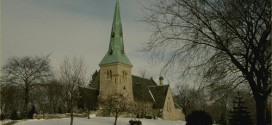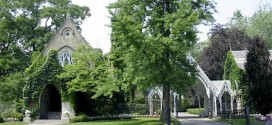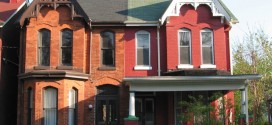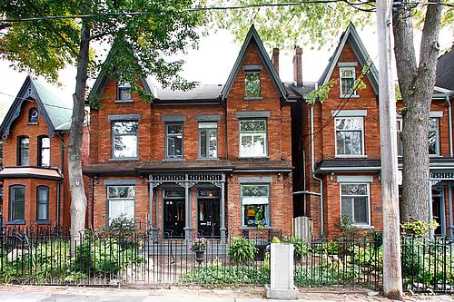The St. James the Less Chapel has served as both a parish church and cemetery for the historic St. James Cathedral for over a century, making it one of Toronto’s central cultural facilities. The rich origins of the St. James the Less Chapel compel tourists and historians from all around the world to visit the Cabbagetown community and walk the Chapel’s religious grounds every year. As St. James the Less Chapel is a also a bold example of Gothic Revival architecture, the structure is considered to be a great pride of the Cabbagetown Conservation District. A Brief History of the St. …
Read More »The Toronto Necropolis Chapel
Built in 1872, the Toronto Necropolis Chapel remains a stellar example of Gothic Revival architecture in Cabbagetown, attracting many visitors from around the world each year. Known literally as the “City of the Dead”, the Necropolis Church’s 7 hectare grounds became Toronto’s second non-sectarian cemetery, after replacing Potter’s Field of Old York. During the transition, 984 bodies were transported from Potter’s Field to the Necropolis Chapel, where they were buried in a special section known as “The Resting Place of Pioneers”. Of the bodies currently buried at 200 Winchester Street, William Lyon Mackenzie, Toronto’s first mayor, and George Brown, a confederate …
Read More »Gothic Revival Architecture on Amelia Street
Earlier in the year, we posted a profile on Gothic Revival architecture in Cabbagetown, outlining the style’s various characteristics with examples from the community. As it so happens, Amelia Street, a division of the Cabbagetown Metacalfe Heritage Conservation District, showcases two homes of the Gothic Revival style worth discussing: George Caden / Albert Long House (20-22 Amelia Street) As a semi-detached residential home, complete with three floors, this property is a notable example of Gothic Revival architecture in the neighbourhood. Completed in 1901, the home displays many prominent characteristics of the late Victorian Era, as can be seen in its steeply pitched gabble roof …
Read More »Gothic Revival in Cabbagetown
Although created in the early 18th century, the Gothic Rival style had been primarily used during the 19th century. By this time, Victorians had grown bored of their Gregorian homes and yearned for more colour and decoration. Initially, this style was favoured by successful industrialists in England, but by the late 19th century, entire suburbs began to resemble the Gothic Revival: Pointed arches Ribbed vaults Flying buttresses Spacious arcades, galleries, and clerestory stained glass windows Quatrefoil and clover-shaped oriel windows Pinnacles Grouped chimneys The Gothic Revival reached popularity in North America shortly after Andrew Jackson Davis’ 1837 release, Rural Residences, …
Read More » Cabbagetown Info Events, reviews and what's happening in Cabbagetown, Toronto
Cabbagetown Info Events, reviews and what's happening in Cabbagetown, Toronto




